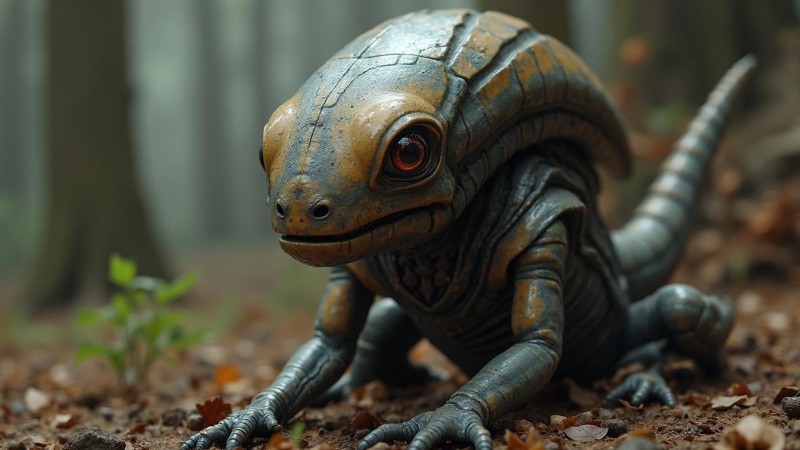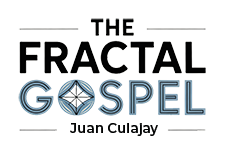Fractalism on Astrobiology

Applying Pattern Logic to the Search for Life Beyond Earth
Fractalism offers a powerful lens for investigating astrobiology—one grounded in logic, biology, and the recursive structures of nature. Rather than beginning with speculation or belief, it begins with pattern recognition and biological consistency across scales.
This approach challenges the assumptions of traditional astrobiology, myth, and UFO culture by asking one foundational question:
Is this being evolved, bred, engineered, or alien?
The Origin Classification System
| Category | Defining Traits | Genetic/Cellular Features | Survival Requirements | Key Observations |
|---|---|---|---|---|
| Evolved | Naturally selected, Earth-native | Shares cell architecture, DNA, genetic code, homologous structures | Survives independently in Earth environments | Fossil record, genetic variability, inefficiencies (e.g., junk DNA) |
| Bred | Selectively enhanced Earth organism | Same as evolved; traits exaggerated or optimized | Earth-compatible | Artificial selection, often linked to domestication or enhancement |
| Engineered | Custom-built or hybrid | Mixed: foreign and Earth traits; simplified genome | Survives on Earth without external support | May lack reproductive system; task-optimized; disposable anatomy |
| Alien | Originates from another planet | Unique body plan; likely different genetic code and cellular machinery | Requires environmental technology or protective suit (similar to an astronaut suit); vulnerable to Earth microbes | No homologous structures; convergence may explain limited similarity |
Codon Distribution: A Signature of Evolution

A key feature of evolved biology is the redundancy and inefficiency of the genetic code. On Earth:
64 codons encode 20 amino acids and 3 stop signals.
Some amino acids (e.g., Leucine, Serine) are encoded by 6 codons.
Others (e.g., Methionine, Tryptophan) are encoded by only one.
This creates a bell-shaped curve of codon redundancy, a statistical distribution that strongly suggests:
Natural selection over time
Mutation tolerance
Evolutionary drift and historical constraint
Why It Matters:
Engineered genomes would likely feature uniform codon distribution, optimized reading frames, and minimal non-coding regions.
Alien organisms, even if carbon-based and DNA-driven, would likely not share Earth’s codon assignments, ribosomal structure, or post-translational processes.
"The genetic code is not universal—it's Earth’s dialect of life."
How to Identify a Truly Alien or Engineered Lifeform
Fractalism provides a testable approach:
Does it have photosynthetic traits but is capable of movement or labor-intensive function? On Earth, multicellular photosynthetic organisms (like plants and algae) are largely sessile. A being that combines photosynthesis with locomotion suggests intentional engineering for energy autonomy and task execution.
Does it share Earth’s cellular structure? If yes, it’s likely evolved or bred.
Is it optimized for a single task with minimal complexity? If yes, it may be engineered.
Does it require environmental technology—like an astronaut suit—to survive Earth’s atmosphere? If yes, it’s likely alien.
Are its organs and systems homologous to any known Earth species? If not, it’s possibly alien or engineered.
Does it show convergent evolution (e.g., limbs, eyes, symmetry)? This suggests function-guided adaptation but not shared origin.
Does it lack reproductive organs, exhibit simplified anatomy, or carry genetic sequences with artificial symmetry? Likely engineered.
Case Study: The Nazca Mummies
Based on available anatomical and radiological data:
Presence of embryos in the larger specimens and visible egg-like structures in smaller ones suggests a reproductive capacity, possibly oviparous
Fused digits, vestigial musculature, no teeth
Unlikely to have evolved naturally on Earth
Appears built to survive in Earth conditions without external support
Fractalist conclusion: The ability to reproduce does not disqualify a being from being engineered. What supports the engineered classification is that the smaller mummies do not share anatomical similarities with any known Earth-based life form, yet were clearly able to survive and reproduce in Earth conditions. The larger specimen, while partially human in body and DNA, has major modifications to the hands, feet, and skull that do not exist in any known primate. These anatomical divergences, combined with their reproductive viability, strongly suggest they are engineered beings designed to function on Earth—possibly using partial human or Earth-compatible biology as a base.
Can Engineered Life Evolve?
Yes—but evolution in engineered species is a very steep hill to climb.
Engineered beings often begin with limited genetic diversity, tightly optimized for specific tasks.
While mutation still occurs, there’s less raw material for natural selection to work with.
Without recombination and environmental pressure, most mutations in engineered beings are either neutral or harmful.
Over time, though, if allowed to reproduce and diversify, even engineered life can drift into new forms.
Fractalist Insight:
Evolution is not a ladder—it is a field of possibilities.
Engineered life doesn't break the laws of evolution, it just starts from a narrower path.
Hypothetical Scenario: Breakaway Engineered Beings
Imagine an engineered species created for specific functions—maintenance, labor, observation—by an advanced civilization. Over time, due to neglect, collapse, or rebellion, these beings become independent.
But they face a critical problem: their biology was never meant for long-term survival.
Low genetic variability makes them vulnerable to mutation, degeneration, or infertility.
Environmental incompatibilities force them to rely on technology for survival.
Loss of creator support means they must now adapt or perish.
In desperation, they seek new sources of viable genetic material. This may lead them to:
Study or interact with naturally evolved life forms
Create hybrids
Attempt to reconstruct lost capabilities using external DNA
Fractalist Reflection:
Even engineered life follows the entropy curve. Without diversity, life cannot adapt. Without adaptation, survival becomes mission-critical.
This scenario echoes patterns seen across myth, biology, and technology:
The creation always strives for independence, but freedom demands evolution.


Leave a comment